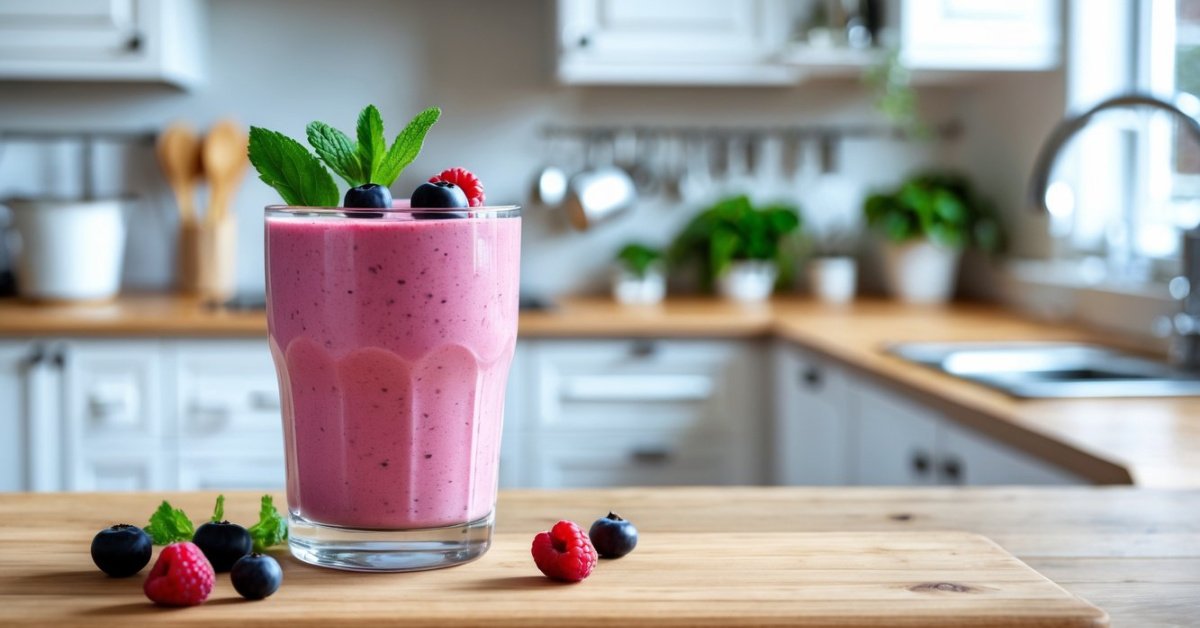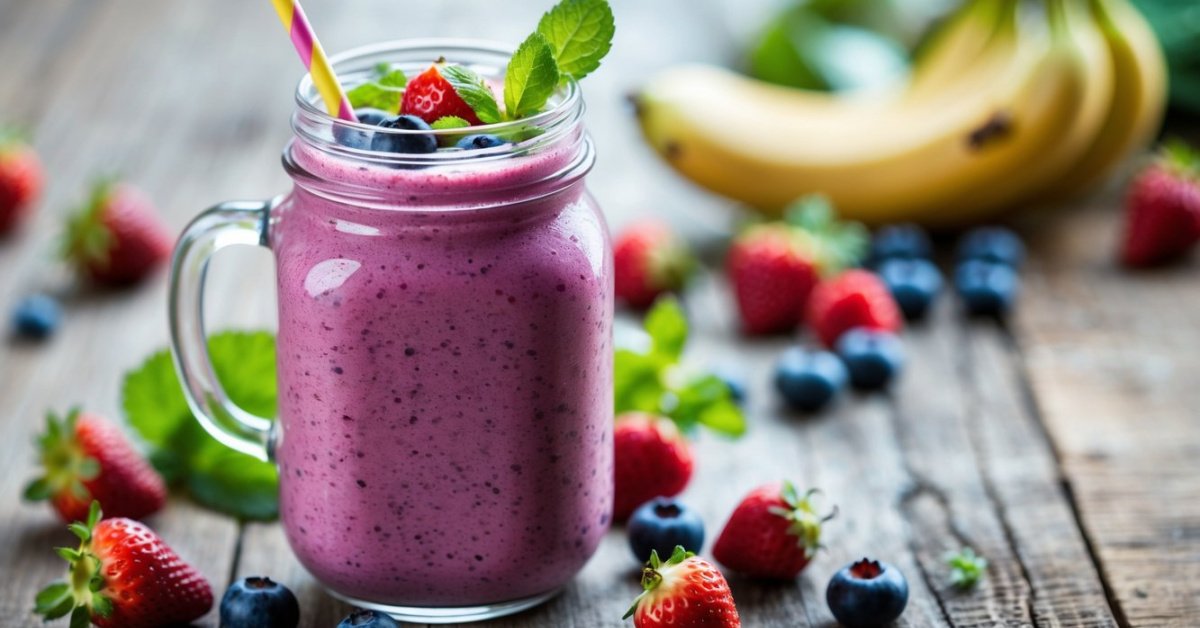I love starting my day with a refreshing smoothie. It’s not just about the flavors or the nutrients—it’s also a simple way to stay hydrated without even thinking about it. While I used to reach for plain water, I’ve found that adding a liquid base to my smoothies makes a big difference in how energized and refreshed I feel.
Whether I’m blending coconut water, almond milk, or just plain H2O, these liquid bases do more than just help the blender run smoothly. They’re a tasty and easy way to boost my daily hydration, especially when I’m busy or on the go. It’s amazing how something so simple can make such a big impact on my well-being.
Understanding Liquid Smoothie Bases
Liquid smoothie bases create texture and consistency for every blend I make in my shop. Great bases like filtered water, coconut water, almond milk, oat milk, and dairy milk offer hydration, nutrients, and taste. Each base impacts the drink’s hydration power, mouthfeel, and overall nutrition profile.
Filtered water gives a neutral taste and maximum hydration, useful for simple fruit smoothies. Coconut water provides electrolytes like potassium and magnesium, making blends refreshing and hydrating, especially post-workout. Almond milk keeps a light nutty flavor and adds vitamin E, making it a favorite for those seeking a dairy-free, lower-calorie base. Oat milk works for thicker shakes, adding fiber and a natural mild sweetness popular with customers. Dairy milk delivers protein and calcium for classic shakes and smoothies, suiting those who prefer a creamier taste.
Consistency changes depending on the liquid base and ratio, so I measure carefully to achieve the perfect pourable texture. High-quality, cold liquid bases keep blends fresh and smooth without watering them down.
Key Ingredients That Promote Hydration
Hydrating smoothies start with smart choices for liquid bases and functional add-ins. I always pick ingredients that maximize fluid intake while supporting flavor and nutrition.
Water-Rich Fruits and Vegetables
I rely on water-rich fruits and vegetables to boost hydration in every blend. Cucumbers, watermelons, pineapples, and strawberries each contain over 90% water, adding volume and refreshing texture to smoothies. Leafy greens like spinach and romaine lettuce blend easily, contributing hydration and antioxidants without overpowering the taste. Using these produce options keeps my smoothie recipes light and helps promote fluid balance.
Dairy and Plant-Based Milk Alternatives
Dairy and plant-based milk alternatives support hydration and provide different flavor profiles. I frequently use almond milk, oat milk, and regular milk to create creamy textures. Unsweetened almond milk and soy milk deliver hydration with fewer calories, appealing to those who prefer dairy-free options. Dairy milk adds protein and calcium, making it ideal for recovery smoothies. Each base hydrates while meeting different dietary preferences.
Coconut Water and Herbal Teas
Coconut water and herbal teas offer unique hydration benefits in my smoothie recipes. Coconut water supplies natural electrolytes like potassium and sodium, which support hydration after exercise. Unsweetened herbal teas such as hibiscus, green, or chamomile bring antioxidants and subtle flavors, providing an alternative to milk-based bases. Rotating these liquids lets me boost hydration while offering a variety of smoothie experiences in my shop.
How Liquid Smoothie Bases Enhance Hydration
Liquid smoothie bases improve hydration by delivering fast-absorbing fluids and nutrients in each blend. When I build recipes at my shop, I always consider both the taste and how effectively the base supports the body’s daily hydration needs.
Absorption and Bioavailability
Liquid bases boost the absorption rate of water and nutrients in every sip. Smoothies blend water, electrolytes, and vitamins from ingredients like coconut water, filtered water, and almond milk, making them more bioavailable than eating fruits and vegetables alone. For example, coconut water carries electrolytes that the body absorbs rapidly, while plant-based milks like oat and almond distribute nutrients evenly through the blend. I’ve seen customers feel energized sooner after choosing a smoothie with a thoughtful mix of these hydrating bases.
Electrolyte Balance Support
Liquid bases like coconut water and dairy milk help maintain electrolyte balance in homemade smoothies. Coconut water provides potassium, sodium, magnesium, and calcium per cup—essential minerals that support muscle function and fluid regulation after workouts or during hot days. Dairy milk adds calcium and a small amount of sodium, both vital in keeping the body’s hydration systems steady. I often use these bases for my active customers or anyone seeking to stay refreshed after exercise. Every blend offers a reliable way to deliver both hydration and electrolyte support.
Comparing Liquid Smoothie Bases to Other Hydration Options
Choosing the right liquid smoothies base can significantly change how my body absorbs water and nutrients. When I compare smoothies to classic hydration options, I see differences in efficiency, electrolyte content, and overall benefits.
Smoothies vs. Drinking Water
Smoothie hydration levels rise when I use bases like coconut water or almond milk compared to plain water. Water enters the system quickly with zero added nutrients—many customers grab a glass for a simple thirst fix. In smoothies, liquids blend with fruit and greens, creating a hydrating drink that gives vitamins, minerals, and slow-release energy. I see people stay fuller and refreshed longer after a smoothie with a nutrient-rich base than after just water. If you add water-rich produce (like cucumber, watermelon, or strawberries) to the blend, the hydration effect increases while also giving a richer nutrition profile. Blending filtered water with ingredients hydrates as efficiently as plain water but tastes better and satisfies more.
Smoothies vs. Sports and Energy Drinks
Liquid smoothie bases hydrate more naturally and with fewer additives than most commercial sports or energy drinks. When I make post-gym blends using coconut water, I deliver electrolytes like potassium and magnesium without artificial sweeteners or high sugar levels. Mainstream sports drinks might include sodium and potassium, but they often bring excess sugar and artificial flavors. Smoothie bases, especially when combined with leafy greens or berries, include antioxidants and vitamins—something most energy drinks can’t match. Almond and oat milk bases add a smooth, dairy-free hydration boost for those avoiding lactose, with no chemical aftertaste. By controlling every ingredient in my smoothie shop, I maintain purity, taste, and balanced hydration, whether for athletic recovery or everyday refreshment.
Practical Tips for Maximizing Hydration in Smoothies
Staying hydrated with smoothies depends on the ingredients and the thought behind every blend. I focus on practical techniques in my shop and at home that anyone can use for balanced, flavorful hydration.
Choosing the Right Base for Your Needs
Picking the right liquid base sets the foundation for hydration and taste. When I want maximum hydration with a neutral flavor, I use filtered water in summer berry blends or green smoothies. For post-workout smoothies, I reach for coconut water since it adds potassium and magnesium, both key for electrolyte balance. If I’m making creamy shakes for customers who prefer plant-based options, I use oat milk for its silky texture and almond milk for its vitamin E content. Dairy milk works well for protein-centric blends, especially for breakfast shakes or high-protein recovery drinks. Herbal teas like hibiscus or chamomile make great bases for customers who want unique flavors and added antioxidants. I always match the base to both the nutritional goal and the flavor profile for my blend.
Ideal Portion Sizes and Timing
Each smoothie gets portioned to maximize hydration and avoid heaviness. In my shop, I use 8-12 ounces of liquid base per 16-ounce smoothie. This creates a consistency that’s drinkable but not too thin. At home, I stick to similar ratios, adjusting slightly for denser add-ins like nut butter or protein powder. Timing also matters—a smoothie with a hydrating base like coconut water or filtered water works best first thing in the morning or post-exercise to help the body absorb fluids quickly. For meal replacement shakes, I add just enough base to maintain texture but not dilute nutrients. Serving smoothies cold, not frozen solid, also helps with faster hydration and absorption.
Conclusion
Choosing the right liquid base for my smoothies has truly transformed how I stay hydrated throughout the day. It’s amazing how a simple tweak can make such a big difference in both how I feel and how much energy I have.
I love that I can mix and match flavors and nutrients while knowing I’m supporting my body’s hydration needs. Whether I’m reaching for coconut water after a workout or almond milk for a gentle morning boost I know I’m making a choice that benefits my well-being.





